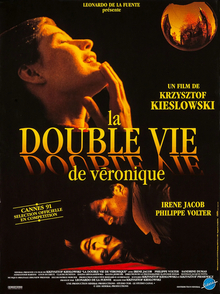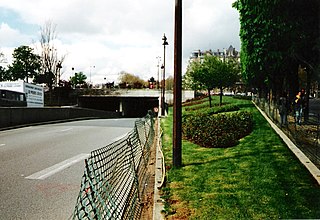Fiat S.p.A., or Fabbrica Italiana Automobili Torino, was an Italian holding company whose original and core activities were in the automotive industry, and that was succeeded by Fiat Chrysler Automobiles NV (FCA). The Fiat Group contained many brands such as Ferrari, Maserati, Fiat, Alfa Romeo, the Chrysler Group, and many more. On 29 January 2014, it was announced that Fiat S.p.A. was to be merged into a new Netherlands-based holding company Fiat Chrysler Automobiles NV (FCA), taking place before the end of 2014. Fiat Chrysler Automobiles became the new owner of Fiat Group. On 1 August 2014, Fiat S.p.A. received necessary shareholder approval to proceed with the merger. The merger became effective 12 October 2014.

The Fiat Uno is a supermini manufactured and marketed by Fiat. Launched in 1983, the Uno was produced over a single generation in three and five-door hatchback body styles until 1995 in Europe — and until 1 January 2014, in Brazil. Designed by Giorgetto Giugiaro of Italdesign, the Uno strongly recalled the high-roof, up-right packaging of Giugiaro's 1978 Lancia Megagamma concept, in a smaller configuration.

The Double Life of Veronique is a 1991 drama film directed by Krzysztof Kieślowski and starring Irène Jacob and Philippe Volter. Written by Kieślowski and Krzysztof Piesiewicz, the film explores the themes of identity, love, and human intuition through the characters of Weronika, a Polish choir soprano, and her double, Véronique, a French music teacher. Despite not knowing each other, the two women share a mysterious and emotional bond that transcends language and geography.

The Fiat Palio is a supermini car released by the Italian manufacturer Fiat in April 1996. It was produced until 2020.

The Fiat Siena is a subcompact car produced by the Italian manufacturer Fiat from 1996 to 2022. It is the four-door sedan version of the Fiat Palio, a supermini car especially designed for developing countries. It was introduced for the first time in South America, and was produced in various countries worldwide. Later, in 2002, a similar car based on the same platform was developed for the European market, the Fiat Albea. It replaced the Siena in these European markets, such as Poland and Turkey, where the original model was previously sold.

The Fiat Albea is a subcompact car produced by the Italian manufacturer Fiat between 2002 and 2012, at the Tofaş facilities in Turkey. It is the European version of the global Fiat Siena, the sedan car derived from the hatch compact Fiat Palio. It is a low cost sedan, aimed at developing global markets, and was not sold in Western Europe.

The Fiat Fiorino is a small commercial vehicle produced by the Italian car manufacturer Fiat since 1977. Its first two generations have been the panel van derivatives of other small models, such as the Fiat 127 and Fiat Uno, while the current third generation was developed jointly with PSA Peugeot Citroën, and is based on the Fiat Small platform.

The automotive industry in Italy is a quite large employer in the country, it had over 2,131 firms and employed almost 250,000 people in 2006. Italy's automotive industry is best known for its automobile designs and small city cars, sports and supercars. The automotive industry makes a contribution of 8.5% to Italian GDP.

During the early hours of 31 August 1997, Diana, Princess of Wales, died from injuries sustained earlier that night in a fatal car crash in the Pont de l'Alma tunnel in Paris, France. Diana's partner, Dodi Fayed, and the driver of the Mercedes-Benz W140, Henri Paul, were found dead inside the car. Dodi's bodyguard, Trevor Rees-Jones, was seriously injured but was the only survivor of the crash.

Alma–Marceau is a station on Line 9 of the Paris Métro, named after the Pont de l'Alma and the Avenue Marceau. The station opened on 27 May 1923 with the extension of the line from Trocadéro to Saint-Augustin.

The Fiat 500 is an A-segment city car manufactured and marketed by the Fiat subdivision of Stellantis since 2007. It is available in hatchback coupé and fixed-profile convertible body styles, over a single generation — with an intermediate facelift in Europe with model year 2016. The 500 is internally designated as the Type 312 by FCA.

Princess Catherine Radziwiłł was a Polish-Russian aristocrat. Born in Russia into the Polish-Lithuanian House of Rzewuski, her maternal family was the Russian Dashkov-Vorontsov family. In 1873 she married the Polish-Lithuanian Prince Wilhelm Radziwiłł.

Princess Diana's Revenge is a novel written by the English writer Michael de Larrabeiti and self-published in 2006, under the imprint "Tallis House", which is the name used by de Larrabeiti for publishing his own works. In the context of de Larrabeiti's other works, it is perhaps closest in tone to his thrillers The Bunce and The Hollywood Takes, dealing with conspiracy theories and partly featuring the documentary film business in which de Larrabeiti's earlier novels were set. Despite de Larrabeiti being an established author of thirty years' standing, Princess Diana's Revenge was turned down by his literary agents, Curtis Brown. The novel was then turned down by over thirty publishers in the United Kingdom. In response to this de Larrabeiti decided to self-publish under his own imprint, "Tallis House". He is one of the first established authors to self-publish, along with the Canadian writer Jim Munroe.
Operation Paget was the British Metropolitan Police inquiry established in 2004 to investigate the conspiracy theories about the death of Diana, Princess of Wales in a car crash in Paris in 1997. The inquiry's first report with the findings of the criminal investigation was published in 2006. The inquiry was wound up following the conclusion of the British inquest in 2008, in which a jury delivered its verdict of an "unlawful killing" due to the "gross negligence" of both the driver of Diana's car and the pursuing paparazzi.
Jennifer K Dick, is an American poet, translator and educator/scholar born in Minnesota, raised in Iowa and currently living in Mulhouse, France. She has been classified as a post-L=A=N=G=U=A=G=E school poet and, by Amy Catanzano, as a U+F+O+L+A+N+G+U+A+G+E poet with a strong background in lyric and narrative tradition.

The Pont de l'Alma is a road bridge in Paris, France, across the Seine. It was named to commemorate the Battle of Alma during the Crimean War, in which the Ottoman-Franco-British alliance achieved victory over the Russian army in 1854. The bridge is also known for being the site of the car crash that caused the death of Diana, Princess of Wales, in 1997.

There are many conspiracy theories surrounding the death of Diana, Princess of Wales, on 31 August 1997. Official investigations in both Britain and France found that Diana died in a manner consistent with media reports following the fatal car crash in Paris. In 1999, a French investigation concluded that Diana died as the result of a crash. The French investigator, Judge Hervé Stephan, concluded that the paparazzi were some distance from the Mercedes S280 when it crashed and were not responsible for manslaughter. After hearing evidence at the British inquest, a jury in 2008 returned a verdict of "unlawful killing" by driver Henri Paul and the paparazzi pursuing the car. The jury's verdict also stated: "In addition, the death of the deceased was caused or contributed to by the fact that the deceased were not wearing a seat belt and by the fact that the Mercedes struck the pillar in the Pont de l'Alma tunnel rather than colliding with something else."

Café de Flore is a Canadian drama film, released in 2011. Directed, written, and edited by Jean-Marc Vallée, the film garnered 13 nominations for the 2012 Genie Awards. The film's title refers not to the café on Boulevard Saint-Germain in Paris, but to a Matthew Herbert song of the same name which the film uses to represent its musical current.

Diana is a 2013 biographical drama film directed by Oliver Hirschbiegel, about the last two years of the life of Diana, Princess of Wales. The screenplay is based on Kate Snell's 2001 book, Diana: Her Last Love, and was written by Stephen Jeffreys. British actress Naomi Watts plays the title role of Diana.

The Place Diana is a public square situated in the 16th arrondissement of Paris, near the Seine river.

















